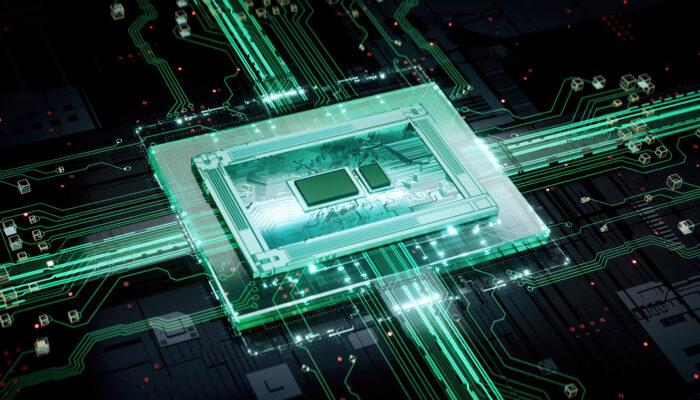Global Navigation Satellite System (GNSS) technology has revolutionised many industries and applications. Beyond mere convenience, GNSS has fundamentally transformed how we navigate, transport goods, cultivate crops, construct buildings, and much more, permeating virtually every aspect of our daily lives.
With the democratisation of GNSS correction solutions set to bring about advancements in precision for a range of mission-critical applications, GNSS is poised to further establish itself as one of the pivotal drivers of Industry 4.0 and enable a new era of mass adoption.
The limitations of standalone GNSS
While GNSS has ushered in an era of unparalleled connectivity and positioning capabilities, it is not impervious to the influence of timing and atmospheric interference. We can categorise these disruptions into two groups: receiver-related and satellite-related errors.[1]
Receiver-related errors result from atmospheric interference, multipath interference, and radio frequency disruptions. These errors are caused by Earth’s atmospheric effects, signal reflections off objects, and interference from other electronic devices respectively.
Satellite-related errors stem from imperfections in satellite timekeeping, including clock drift and ephemeris errors. Clock inaccuracies and discrepancies in recorded satellite positions and velocities can lead to significant position calculation errors.
Enhancing GNSS precision with RTK and PPP
Precision is paramount in GNSS as it underpins accurate positioning and timing, crucial for navigation, surveying, and telecommunications. In navigation, precision GNSS is vital for the safety and efficiency of autonomous vehicles and drones. Surveying benefits from precise maps and distance measurements. Furthermore, in telecommunications, it synchronises clocks in expansive networks, ensuring seamless data flow. Without precision, GNSS falls short of meeting accuracy needs in these critical domains and other applications.
Hardware-based positioning correction technologies like Real-Time Kinematic (RTK) and Precise Point Positioning (PPP) offer solutions to GNSS limitations. RTK achieves centimeter-level accuracy by using a base station to send reference signals to the receiver, correcting GNSS positioning signals instantly. It calculates the positional discrepancy between the base station and the receiver, resulting in highly accurate positions. However, it requires an extensive network of base stations, making it suitable primarily for developed areas. This also makes it cost-prohibitive for mass adoption.
On the other hand, PPP achieves centimeter to decimeter-level accuracy without base stations by utilizing precise satellite orbit and clock corrections from a global reference network. Corrections are received via satellite or the Internet, addressing common GNSS errors like clock and orbit errors, atmospheric delays, and multipath interference. PPP serves various applications, including surveying, mapping, agriculture, construction, and mining.
Enabling industrial autonomy: Mission-Critical Machine Control (MCMC) and the role of RTK
RTK technology is the top choice for critical industrial applications, thanks to its use of high-quality radio modems with low latency, interoperability, and reliability, even in harsh environments. This ensures reliable reception of real-time correction signals from base stations, boosting success.
Key drivers for RTK adoption in industrial autonomy include its hardware foundation with robust radio frequency (RF) and communication tech, providing highly accurate real-time positioning signals. The software layer supports machine-to-machine (M2M) communication, enabling machines to autonomously collaborate and coordinate.
Integrating Artificial Intelligence (AI) and robotics revolutionises high-risk industrial environments by reducing human involvement. This advancement introduces “mission-critical machine control” (MCMC), wherein industrial applications execute exclusively via machines positioned with near-perfect precision. AI and robotics can assist in optimising a multitude of tasks, ranging from tractors achieving maximum fertiliser coverage to excavators navigating construction sites with unmatched efficiency and safety. Together, these elements underscore the increasing importance of technologies like RTK in realising the future of industrial automation.
We recently advised on the sale of Satel Oy, a Finland-based world leader in high-performance radio frequency and wireless communications for industrial applications, to Topcon Positioning Systems, a US-based industry leader in precision measurement and workflow solutions for the construction, geospatial, and agriculture markets.[2] The acquisition will serve to enhance Topcon’s portfolio with diverse mission-critical connectivity and industrial autonomy solutions, positioning them at the forefront of technological innovation and allows Satel to focus on fulfilling the company’s strategic objectives of MCMC.
The European Space Agency anticipates a bright outlook for the global GNSS market, forecasting a robust Compound Annual Growth Rate (CAGR) of 9.2% over the coming decade.[3] As businesses strive to reach the forefront of industrial autonomy, the demand for advanced GNSS technologies, encompassing correction solutions, is poised to surge in tandem and perhaps even outpace this growth trajectory.
The democratisation of RTK GNSS correction
To enhance real-time accuracy and expand coverage, companies are integrating RTK and PPP into a State Space Representation (SSR) approach. This approach combines the strengths of both technologies, offering precise positioning at a lower cost and promoting broader GNSS correction service adoption.
The challenges hindering the widespread adoption of GNSS correction services are noted by the European GSA. A recent study highlights that current high-precision GNSS methods, including RTK and PPP, entail substantial expenses, necessitating high-end receivers that render such services practical only for professional applications such as surveying, mapping, remote sensing, precision agriculture, and marine positioning.[4]
U-blox’s PointPerfect PPP-RTK GNSS service is at the forefront of efforts to address these challenges, striving to deliver a scalable, high-accuracy positioning solution that caters to the burgeoning mass market demand for high-precision GNSS solutions.[5] In addition, Swift Navigation[6] and Point One Navigation (Polaris)[7] provide cloud-based RTK-as-a-Service solutions, granting instant access to RTK corrections without purchasing costly hardware elements. These aim to improve widespread access to accurate GNSS correction solutions.
Shifting paradigms: From hardware vs software to “outside the receiver” vs “within the receiver”
The distinction between hardware and software is a misleading way to view GNSS correction as it overlooks an essential consideration for mass adoption, where the corrections are performed. Instead, it’s more useful to categorise corrections as either external or within the receiver.
“Outside the receiver” involves sources that are outside the device that compute and transmit correction signals such as RTK or PPP technologies. In this context, receivers encompass various devices, such as vehicles on the road or tractors in agricultural fields.
Mass adoption in urban areas requires solutions that perform well despite challenges like interference and limited line of sight caused by buildings and infrastructure. Even with advanced GNSS correction technology, urban environments can still degrade signal quality.
In industrial settings, solutions like RTK work effectively because they have a clear Line of Sight (LOS) between the base station and receivers, ensuring uninterrupted signal delivery. However, this approach may not be as successful in urban areas due to the presence of buildings and infrastructure.
In contrast, “within the receiver” solutions, like Focal Point Positioning’s Supercorrelation [8], are better suited for urban environments. A leader in the market, Focal Point Positioning, a UK-based company, offers a receiver-level software that can provide angle of arrival of radio signals, significantly improving the accuracy of GNSS receivers without any hardware or infrastructure.
Software-driven “within-the-receiver” solutions enable a new era mass adoption in GNSS correction
Supercorrelation is the only software-based GNSS correction solution designed to seamlessly integrate into the modern system-on-a-chip silicon architecture that underpins consumer GNSS receivers. This innovation effectively eliminates unwanted interference signals, without requiring additional hardware or infrastructure changes. This means it offers a cost-effective software upgrade path, simplifying adoption on a large scale.
The impact of this technology is profound, with numerous applications. Imagine your Uber arriving precisely at your location, your advanced driver-assistance system (ADAS) expertly navigating complex intersections, and your smartwatch accurately tracking your Saturday morning run. Supercorrelation fulfills the promises of these technologies seamlessly.
The automotive industry can benefit significantly from Supercorrelation, unlocking an array of autonomous use cases like V2V and V2I communications. McKinsey predicts a GDP impact of $170 billion to $280 billion by 2030 [9]. Other sectors such as navigation, wearables, mobility solutions, and cybersecurity also stand to gain. In fact, these technologies can potentially secure contracts in industries where user experience is vital such as ride-hailing platforms, food delivery apps, or fitness device brands, leading to enhanced customer loyalty.
Crucially, Supercorrelation complements RTK and broadens its applications. GNSS receivers with Supercorrelation can retain RTK functionalities and improve them, especially in urban settings, ensuring reliable line-of-sight RTK correction signals. In construction, it acts as a second-layer verification for RTK correction signals, confirming their integrity against environmental factors.
As the quest for precision and accuracy in GNSS applications continues, innovations like Supercorrelation are prime examples of the potential inherent in software-driven “within-the-receiver” solutions. These innovations can redefine the limits of what can be achieved in GNSS positioning and industrial autonomy, pointing the way toward a future of even greater precision and reliability.
Learn more about us.
View our transactions.










